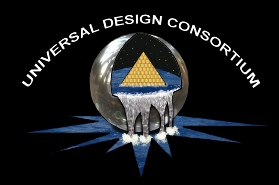



Skylight
A skylight is a special type of window built into the roof of a house in order to allow natural light to come into the house directly. A skylight may be installed for aesthetic purposes, or as part of a general passive-
Many people end up choosing a skylight that is far too large for their house in order to try to add as much light as possible. Unfortunately, even the best skylights have much poorer insulation than a comparable space of roof, so a large skylight allows large amounts of heat to escape during cold weather, and too much heat to enter the house during warm weather. For this reason, it is recommended to consider how much direct sun the roof receives, and how great the temperature shift is from season to season, before choosing a skylight. In general, a skylight allows approximately eight times as much light to enter the house as a comparably sized wall window.
There are three main classes of skylight widely in use. A ventilating skylight may be opened to allow air to pass through. These skylights are ideal for bathrooms and kitchens, where they help to relieve excess moisture and keep the flow of air steady. Ventilating skylights may be controlled by a remote, by a hand crank, or by an automatic sensor which tracks inside temperature.
A fixed skylight is any type of skylight which doesn't open. This type of skylight is intended solely to allow light to pass into the house. Lastly, the tubular skylight is essentially a very small skylight, intended mainly for hallways and small rooms where a traditional skylight wouldn't easily fit.
There are nine main skylight styles in use, which may be used for both ventilating and fixed skylights. Five of these are relatively common in small to mid-
A flat skylight is probably the most common, consisting of a square or rectangular piece of flat glass or acrylic, which may be fixed or ventilating. A round skylight emerges from the roof as a half-
In addition to these primary residential styles, there are four styles of skylight more often associated with large buildings. The hip ridge skylight is a long rectangular skylight which peaks up above the roof surface to a central ridge, with a sloping triangular piece of glass on either short end. The ridge skylight is a simpler version, with two long triangles sloping in towards one another, and straight triangles closing off either end. The lean-
Light tube
Light tubes or light pipes are used for transporting or distributing natural or artificial light. In their application to daylighting, they are also often called sun pipes, solar pipes, solar light pipes, or daylight pipes.
Generally speaking, a light pipe or light tube may refer to:
· a tube or pipe for transport of light to another location, minimizing the loss of light;
· a transparent tube or pipe for distribution of light over its length, either for equidistribution along the entire length (see also sulfur lamp) or for controlled light leakage.
Also known as a "tubular skylight", "Sunscoop" or "tubular daylighting device", this is the oldest and most widespread type of light tube used for daylighting. The concept was originally developed by the ancient Egyptians. The first commercial reflector systems were patented and marketed in the 1850s by Paul Emile Chappuis in London, utilising various forms of angled mirror designs. Chappuis Ltd's reflectors were in continuous production until the factory was destroyed in 1943. The concept was rediscovered in 1991 when Solatube International created a daylighting system based on a patent of 1986.This system has been marketed for widespread residential and commercial use. Other daylighting products are on the market under various generic names, such as "Sunscoop", "solar pipe", "light pipe", "light tube" and "tubular skylight".
A tube lined with highly reflective material leads the light rays through a building, starting from an entrance-
The entrance point usually comprises a dome (cupola), which has the function of collecting and reflecting as much sunlight as possible into the tube. Many units also have a directional "collectors", "reflectors" or even Fresnel lens devices that assist in collecting additional directional light down the tube.
A set-
Light transmission efficiency is greatest if the tube is short and straight. In longer, angled, or flexible tubes, part of the light intensity is lost. To minimize losses, a high reflectivity of the tube lining is crucial; manufacturers claim reflectivity of their materials, in the visible range, of up to 98 to almost 99.5 percent.
At the end point (the point of use), a diffuser spreads the light into the room.
To further optimize the use of solar light, a heliostat can be installed which tracks the movement of the sun, thereby directing sunlight into the light tube at all times of the day as far as the surroundings´ limitations allow, possibly with additional mirrors or other reflective elements that influence the light path. The heliostat can be set to capture moonlight at night.
Light well
In architecture a light well is an open space reaching from a glazed roof down several storeys, typically to the ground floor or basement level.
Light wells serve to reduce the necessity for electric lighting, add a central space within the building, and provide an internal open space for windows to give an illusion of having a view outside.
In terraced or row or tenement housing, it is a term for the space between buildings beyond the adjoining front wall, to allow natural light -
use of the light well was known in ancient civilizations, including Egypt and at the Palace of Knossos on Minoan Crete. There are also instances of light well use by the Romans.
Ultraviolet light
Ultraviolet (UV) light is electromagnetic radiation with a wavelength shorter than that of visible light, but longer than x-
UV light is found in sunlight and is emitted by electric arcs and specialized lights such as black lights. As an ionizing radiation it can cause chemical reactions, and causes many substances to glow or fluoresce. Most people are aware of the effects of UV through the painful condition of sunburn, but the UV spectrum has many other effects, both beneficial and damaging, on human health.
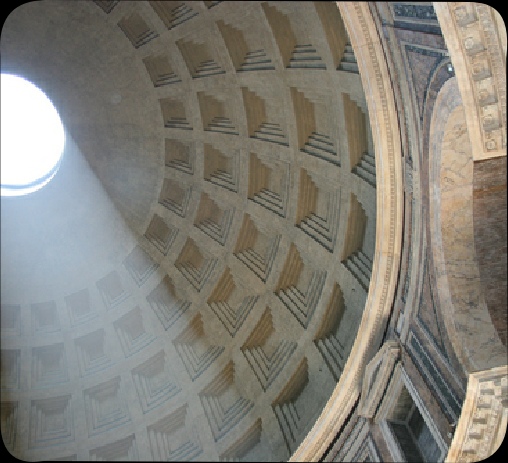
RIGHT: Pantheon in Rome has a single oculus in the center of the dome that acts like a lite well illuminating the interior of the building. The Pantheon means “Temple of the Gods” and it was originally constructed for that purpose in 31 BC by Agippa. However, since the 7th century, the Pantheon has been used as a Roman Catholic church. The Pantheon is the oldest standing domed structure in Rome. The height to the oculus and the diameter of the interior circle are the same, 43.3 metres (142 ft).
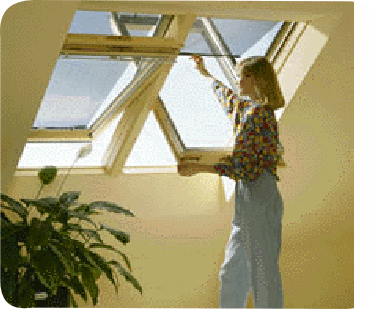
Ventilation skylight
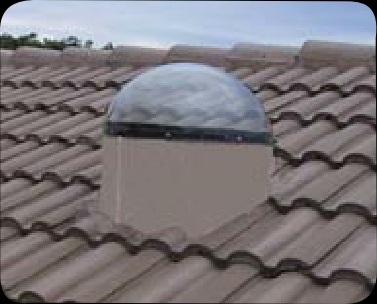
Tubular Skylight
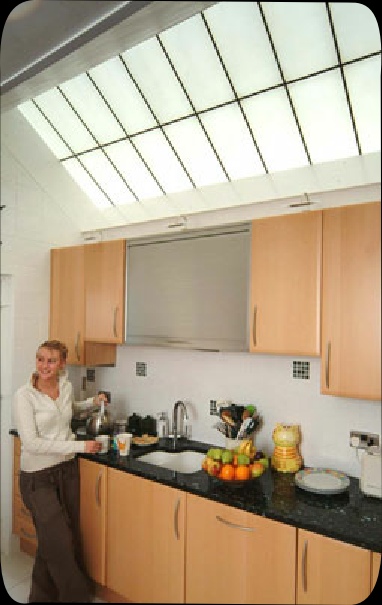
Flat skylight
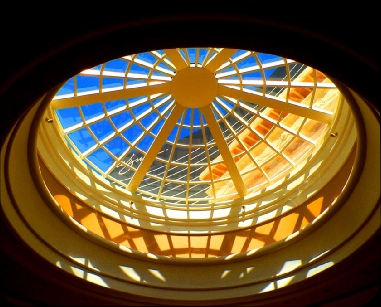
Round skylight
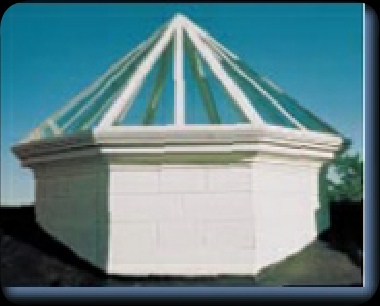
Polygon skylight
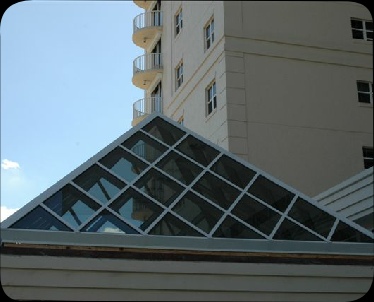
Pyramid skylight
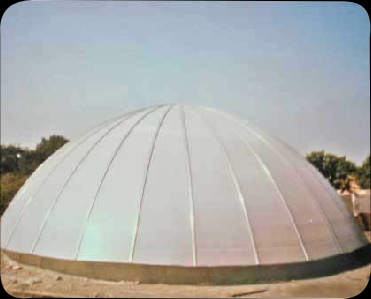
Dome skylight
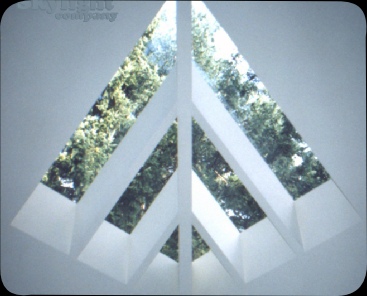
Hip Ridge skylight
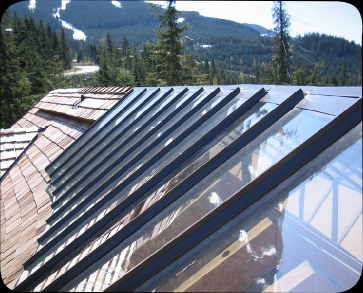
Ridge skylight
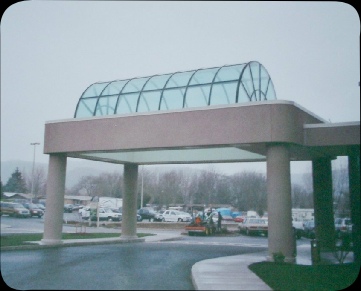
Barrel Vault skylight
